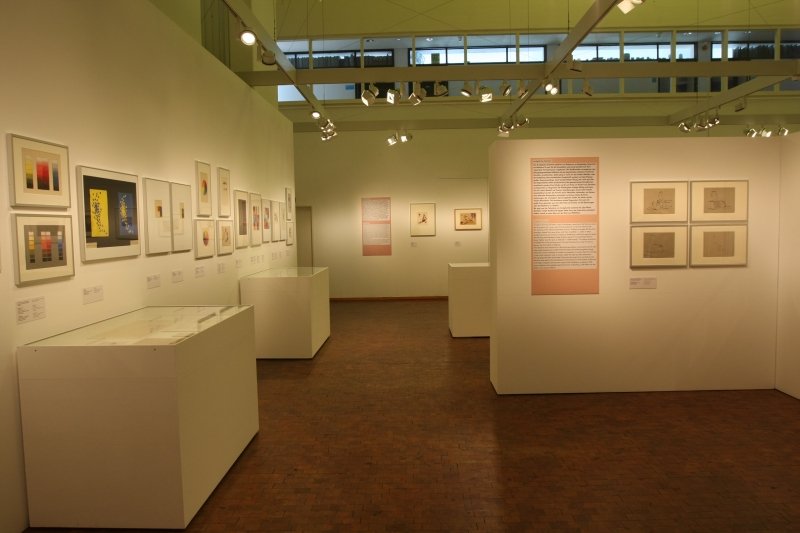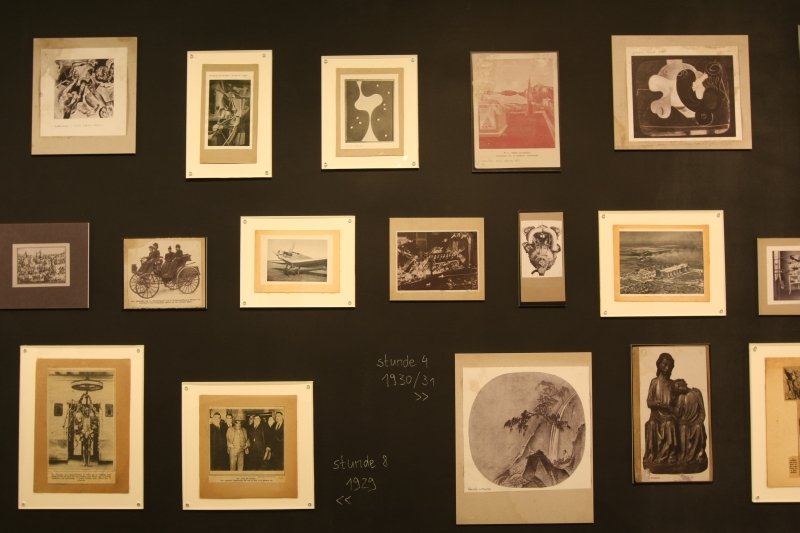Amid all the hype surrounding "Bauhaus Style", "Bauhaus Classic" and "Bauhaus Design" it is often forgotten that Bauhaus was a college.
And whereas many, if not most, people can name half-a-dozen or so Bauhaus graduates; hundreads of students passed through Bauhaus.
And it wasn't all just partying and theatre. They did also learn.
But what did they learn? How did they learn? And what can we learn from how and what they learnt?
In an attempt to answers such questions the Bauhaus Archiv Berlin is currently presenting an exhibition devoted to the longest serving member of the Bauhaus teaching staff: Wassily Kandinsky.

Born in Moscow on December 4th 1866 Wassily Kandinsky initially studied law, economics and statistics in Moscow before moving to Munich in 1896 where he attended painting classes under tuition from Anton Ažbe. In 1901 Kandinsky co-established the progressive artist collective, and private painting school, Phalanx; an institution which closed in 1904, upon which Kandinsky undertook a series of study tours to and of Holland, France, Tunisia, Italy and Switzerland. Returning to Moscow in 1914 Wassily Kandinsky held various teaching and administrative positions at culture and art institutions, most notably the State Commissariat for Education (Narkompros) and the Institute of Artistic Culture (INChUK), before Walter Gropius invited him to join Bauhaus in 1922. Following the closing of Bauhaus in 1933 Wassily Kandinsky emigrated to Paris where he died on December 13 1944 aged 78.
Presenting a mix of works by Kandinsky, Kandinsky's students and his Bauhaus teaching colleagues, works supported and extended by Kandinsky publications and original documents and teaching materials, "Wassily Kandinsky – Lehrer am Bauhaus" not only shows how Kandinsky ran his various courses in Weimar, Dessau and Berlin and what he expected of his students, but also helps explain how Kandinsky himself developed as an artist over his Bauhaus years.
As one would expect from an exhibition exploring Wassily Kandinsky and his teaching at Bauhaus there are an awful lot of geometric shapes in primary colours to be found on the walls. Created by his students in the context of Kandinsky's "abstract elements of form" course, the colours and patterns present both part of Kandinsky's own research into form and colour and also illustrate how he sought to encourage his students to think for themselves.
How Kandinsky employed what he learnt from such research can be seen in several of the Kandinsky works on show. How the students employed what they learnt from such research in their subsequent careers, is sadly not documented. Would however be equally interesting.
A further focus of the exhibition is Kandinsky's "analytical drawing" class, a central component of his teaching and a class which taught students to understand relationships between objects through a process of simplification of form. Again here a selection of works by Kandinsky students beautifully illustrates how they were encouraged to focus on the essential through a process of sequential reduction, and then build something new from there. An approach we can probably all occasionally benefit from following. In whatever we do.
In addition to the more abstract works and ideologies "Wassily Kandinsky – Lehrer am Bauhaus" also looks at the fine art class taught by Kandinsky and Paul Klee, including a truly remarkable 1932 work by Hajo Rose, and in a similar vein, the exhibition "ends" with one work each by László Moholy-Nagy, Paul Klee, Georg Muche and Lyonel Feininger. Works that the four presented to Kandinsky on his 60th birthday and which beautifully depict the creative talents of the Bauhaus teaching staff.

Wassily Kandinsky is and was an important teacher at Bauhaus not only because of his length of service, but also because from 1922 until 1930 - so the most important Bauhaus years - Kandinsky's Vorkurs was compulsory for all students. Which, and if we may simplify the world for just a couple of minutes, means that if you understand Kandinsky you understand Bauhaus.
Representing the most comprehensive exploration of Wassily Kandinsky's teaching ever compiled, and coming some 30 years after the last exhibition on the subject, "Wassily Kandinsky – Lehrer am Bauhaus" is a timely and highly entertaining investigation of the subject but for all is a very accessible exhibition that uses simple, at times almost too simple, methods to present the key information and so allow the visitor to explore and understand the topics at hand.
Wassily Kandinsky - Lehrer am Bauhaus runs at the Bauhaus Archiv, Klingelhöferstrasse 14, 10785 Berlin until Monday September 8th 2014.
In addition to the exhibition itself, the Bauhaus Archiv Berlin have organised an accompanying programme of talks and tours. Full details can be found at www.bauhaus.de